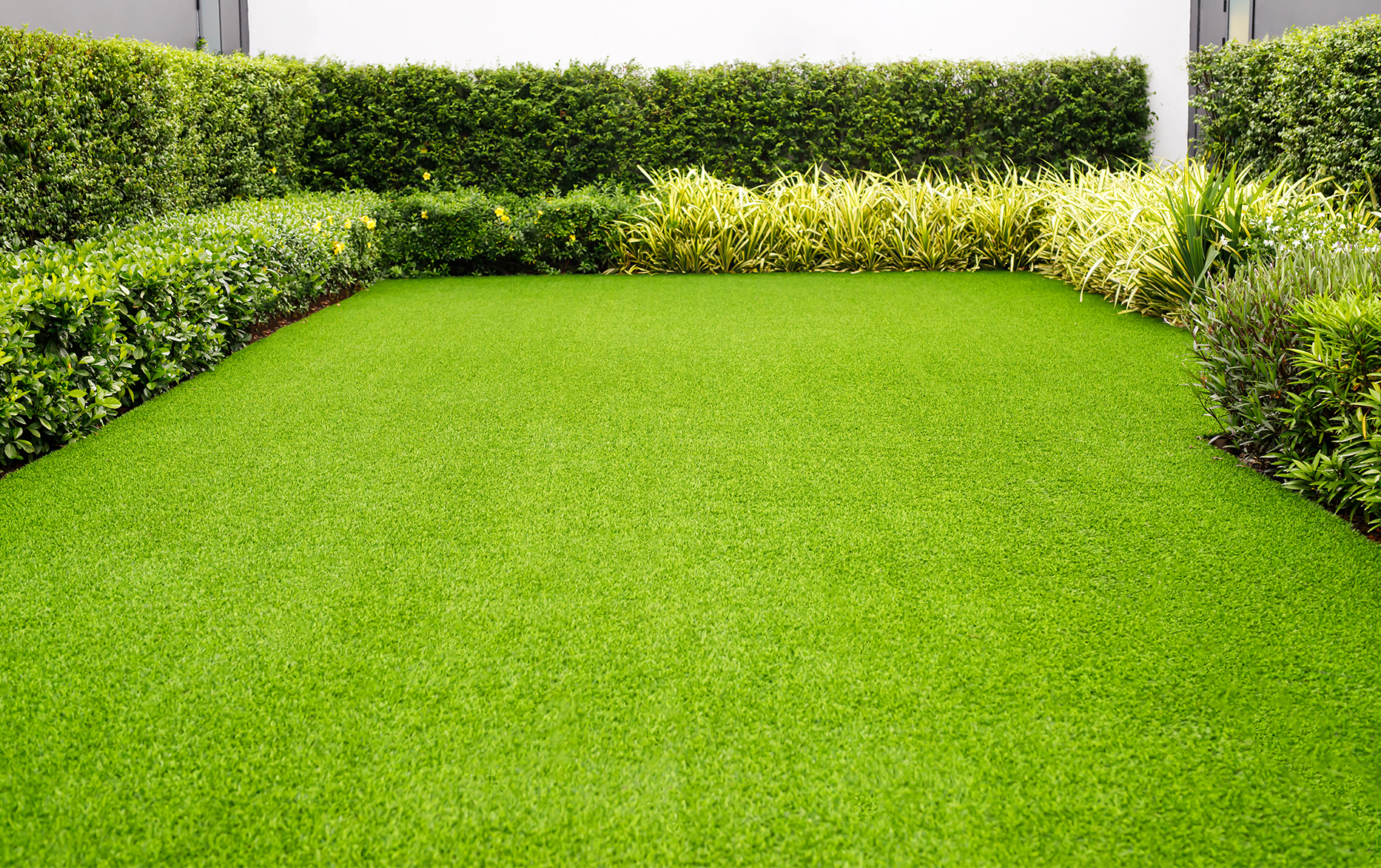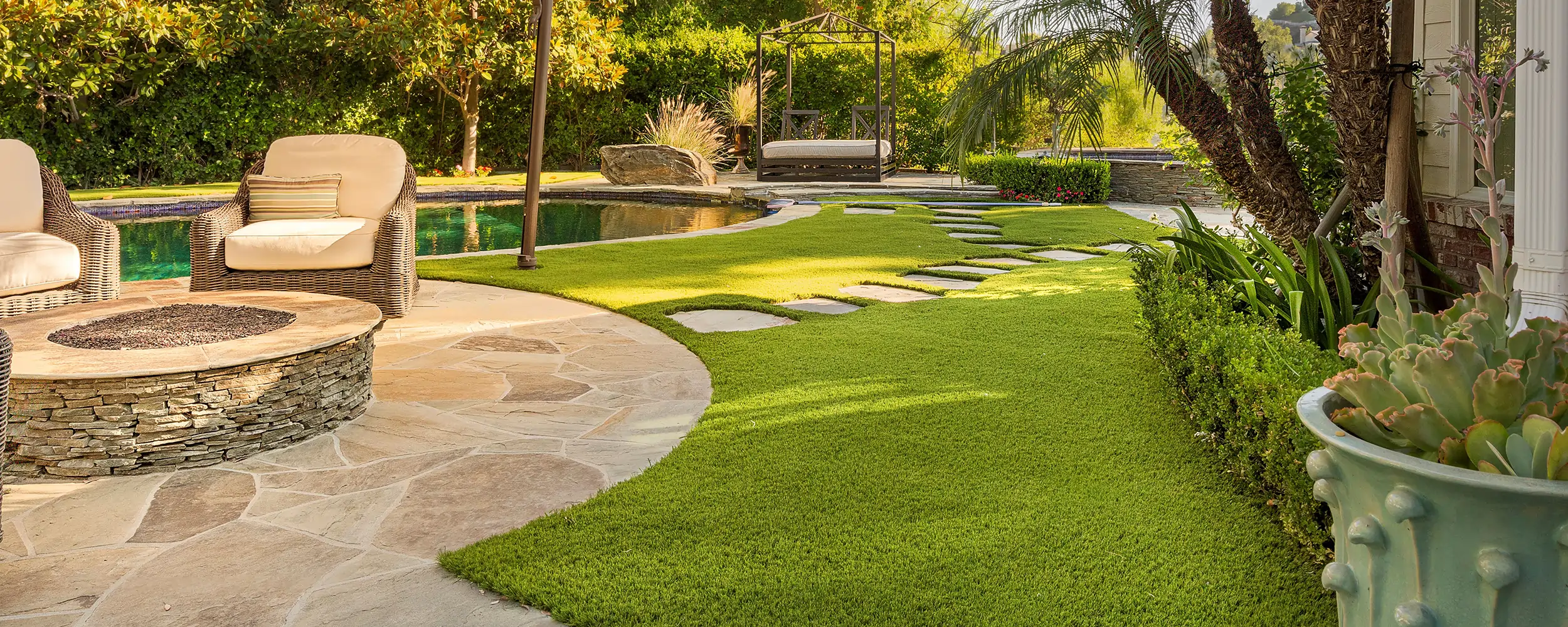Delve Into the Environmental Perks of Opting for Artificial Grass Solutions
The fostering of fabricated grass remedies offers a compelling possibility to attend to pressing environmental challenges. By considerably minimizing water usage and decreasing the application of harmful chemicals, these alternatives not only promote sustainable landscaping yet also secure local ecological communities. In addition, the reduced carbon footprint connected with reduced maintenance activities adds to a much more sustainable approach to land monitoring. The ramifications of these advantages extend past plain preservation initiatives, raising questions concerning their long-lasting influence on environment preservation and total eco-friendly balance. Discovering these measurements reveals an intricate interaction worth thinking about.
Water Preservation Benefits
One of the most significant advantages of artificial grass is its capability to save water. In contrast, artificial turf does not require watering, dramatically decreasing the total demand for water sources.
By removing the need for routine watering, artificial lawn contributes to lasting landscape methods and assists mitigate the environmental effect of extreme water usage. Moreover, the conservation of water encompasses the reduction of drainage, which can cause soil erosion and river air pollution.
Furthermore, the setup of synthetic grass enables home owners and towns to designate water resources much more effectively, focusing on important uses such as drinking water and agriculture. The shift towards synthetic grass not just advertises responsible water usage yet likewise straightens with more comprehensive ecological objectives targeted at maintaining all-natural sources.
As areas significantly focus on sustainability, the water preservation benefits of synthetic grass provide an engaging situation for its fostering in business and property landscaping projects.
Decreased Chemical Usage
The transition to synthetic lawn significantly lowers the dependence on chemical treatments frequently utilized in all-natural turf maintenance. Traditional grass monitoring typically involves the application of herbicides, plant foods, and chemicals to promote development and control parasites. These chemicals can position risks to human health, local wildlife, and the atmosphere, contributing to soil and water contamination.
In comparison, man-made grass removes the need for these dangerous substances. By decreasing the release of synthetic compounds right into the ecosystem, artificial grass promotes healthier dirt and water systems.
Furthermore, the lack of chemical drainage connected with synthetic grass installments aids protect local waterways from contamination, supporting aquatic life and keeping biodiversity. Turf installation phoenix az. As communities progressively focus on lasting techniques, selecting artificial turf presents a viable remedy that aligns with ecological preservation goals. Via this change, residential property proprietors can enjoy lush eco-friendly rooms without compromising eco-friendly wellness, paving the way for a more sustainable future
Reduced Carbon Impact

In addition, the installation of artificial grass can cause considerable water preservation. All-natural grass need significant quantities of water for irrigation, which not just adds to the carbon footprint connected with water extraction and treatment but also pressures local water resources. In comparison, synthetic grass needs marginal maintenance, needing no watering, thereby considerably decreasing water use and its linked energy expenses.
In addition, the long life of synthetic grass contributes to its reduced carbon effect. With a life expectancy of approximately 15 years or even more, the demand for constant substitutes is decreased, causing much less waste and reduced power usage in production and disposing of typical turf alternatives. discover here Generally, artificial lawn presents a sustainable choice for eco mindful landscaping.
Habitat Preservation
Habitat conservation is an essential factor to consider in the dispute over landscape design options, specifically when comparing synthetic lawn to all-natural grass. Natural turf lawns typically require extensive upkeep, including making use of plant foods, herbicides, and pesticides, which can negatively influence local ecological communities. These chemicals can seep right into the soil and rivers, hurting native vegetation and animals and disrupting neighborhood habitats.
On the other hand, fabricated lawn offers a chance to lower the eco-friendly footprint of landscape design. By going with synthetic lawn, property owners can reduce the disturbance of all-natural environments linked with typical yard care methods. Synthetic grass gets rid of the need for dangerous chemicals, thus securing close-by wild animals and maintaining the honesty of surrounding ecosystems. Additionally, the installment of fabricated lawn can bring about the conversion of previous yard areas into even more biodiverse landscapes, such as pollinator yards or native plant areas, which can sustain neighborhood wildlife.
Eventually, the change to synthetic grass not only saves water and decreases upkeep efforts but additionally fosters a much more unified relationship in between human tasks and the native environment, promoting habitat preservation at the same time.
Long-Term Sustainability
Long-lasting sustainability is an important consider reviewing the advantages of man-made lawn over conventional lawn yards. Among the most significant advantages of man-made turf is its durability; it can last approximately 15-20 years with marginal Continue maintenance, whereas natural lawn calls for frequent reseeding and replacement. This longevity lowers the requirement for continuous sources, such as water, plant foods, and pesticides, which are necessary for preserving a healthy turf lawn.
Additionally, synthetic grass adds to a decrease in carbon emissions connected with grass treatment equipment. Conventional lawns typically require gas-powered lawn mowers, trimmers, and blowers, all of which add to air pollution. Arizona turf. On the other hand, fabricated turf gets rid of the need for such devices, advertising a cleaner environment
Additionally, the manufacturing of fabricated lawn progressively makes use of recycled materials, improving its sustainability profile. As suppliers embrace environmentally friendly methods, the ecological footprint of fabricated grass proceeds to lessen.

Verdict
The adoption of fabricated turf services presents significant environmental benefits, consisting of substantial water conservation, minimized reliance on damaging chemicals, and a lower carbon footprint. In addition, artificial turf aids in protecting natural habitats by minimizing land disruption and advertising long-term sustainability through the use of long lasting products. Jointly, these aspects highlight the capacity of man-made grass to contribute favorably to ecological health and wellness and provide a practical choice to typical landscaping practices in a significantly resource-conscious globe.
In comparison, fabricated lawn does not require watering, considerably minimizing the total demand for water resources. By minimizing the launch of artificial substances into the ecosystem, synthetic grass advertises healthier dirt and water systems.
In addition, the installment of man-made turf a fantastic read can result in substantial water conservation. In contrast, fabricated turf requires minimal upkeep, needing no watering, thus considerably minimizing water use and its linked power expenses.
